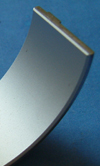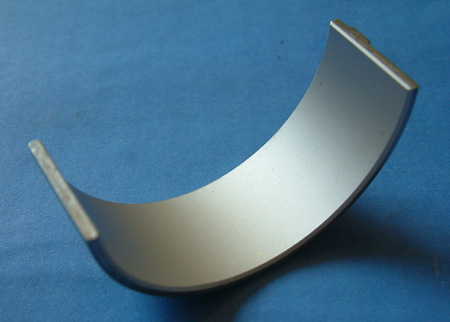Leaded status versus unleaded thoughts…
 In my previous articles on the difference between leaded and lead-free bearing shells materials, the heat transport from oil through the bearing shell to the crankcase was discussed. In this article the current status of the leaded bearing is described.
In my previous articles on the difference between leaded and lead-free bearing shells materials, the heat transport from oil through the bearing shell to the crankcase was discussed. In this article the current status of the leaded bearing is described.
First though I would like to pass on a remark made to me when talking to a well-known bearing shell supplier. When discussing the possible reasons why leaded bearing materials are still favoured over lead-free materials, I was told, "Leaded bearings have been around forever, so people are in their comfort zone with them."
At first I was surprised by this but, on consideration later, I could understand it. It's most probably the same reason why we are still so familiar with the traditional internal combustion engine - not forgetting the fact that the introduction date for the End of Life Directive has been postponed to the middle of 2011. This of course has also reduced the focus on lead-free alternatives.
Now to the engineering side of this matter. Until now, there have been two factors pointing to uncertainty over using lead-free materials - conformability/embeddability and temperature - with temperature perhaps not as strong a factor because oil degradation seems to be more sensitive to higher oil temperatures than the bearing material itself.
As far as the current status regarding bearing shell materials is concerned, in general there are two approaches to their use.
High specific bearing load applications will typically use a lower hardness running layer on a higher hardness base material. An example here is 'Sputter' bearings, which were developed to the limits of galvanic surface coating technology. These bearings are often used in the highest loaded areas of the bearing system (the lower main bearing shell and upper con rod shell) in combination with lower hardness bearing shells for sufficient embeddability.
With Sputter bearings, the base material will need to provide sufficient conformability against deformations. The running layer is too thin to accommodate this function.
Medium and low specific bearing load applications use low-hardness running layers in combination with a higher hardness base material. High-revving race engines - as in Formula One, especially those with large bore sizes - tend to have a certain design freedom for increasing bearing shell widths. As can be read in the latest RET magazine (issue 49, September/October 2010), the main bearings of the Toyota RVX-09 engine have a diameter of 44 mm and a width of 18 mm, resulting in a ratio of 41%. The bearings of the con rods are even more squared, at a ratio of 49% (D: 36mm/ W: 17.5mm). In combination with modest peak firing pressures, this leads to medium specific bearing loads, enabling the use of running layers with very low hardness (10-15 Vickers). An advantage here is very good conformability, combined with an exceptionally high embeddability.
As can be read in one of my earlier articles on lead-free bearings, deformations were looked at from the viewpoint of an initial deformation of the bearing bore. Apart from the initial quality of the machined bearing bore, deformations will also occur during running of the engine, based on the crank train loading and engine block stiffness.

To get a feel for how much deformation can occur, we can make the following comparison. As a rule of thumb, typically the bearing clearance (diameter) is often taken as 0.001 of the bearing diameter. This leads to approx 44 µm bearing clearance. Without having real and objective data of Formula One engines at hand, finite analysis simulations of similar designs show deformations during engine running, which are in the magnitude of half this bearing clearance. This leads to the conclusion that these levels of deformation are of significant influence on the bore shape.
According to a well-known bearing shell supplier, the most common reason for failure in bearing shells in high-revving race engines is wear of the bearing surfaces due to contamination. Lead is able to embed particles of contaminants into the leaded areas, so they don't damage the running surface of the crankshaft. It remains a challenge to develop lead-free alternatives with similar properties in terms of conformability and embeddability as their leaded predecessor.
Having talked to a number of insiders in the race engineering industry on this topic, one can start to understand why the industry is reluctant to develop an alternative to this sensitive bearing system - particularly when there is no urgent legislative reason to do so.
Fig. 1 - Mahle Clevite bearings (Courtesy of Mahle Clevite)
Written by Dieter van der Put